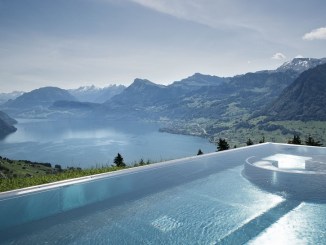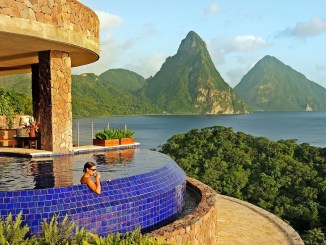Monday newsletters always feature top 10 travel lists to inspire.
Today (September 9, 2019): Top 10 must see sights in India.
Stretching from the Himalaya mountains and the Ranthambore jungle to the beaches of Goa and the lush tropical greenery of Kerala, India is larger than life, with a population that exceeds a billion, 23 official languages and more than a million square miles of land. With more than 5,000 years of history and an amazing array of natural landscapes, it could truly take a lifetime to experience all that India has to offer. And while India inspires, astonishes and enlightens many who tread her soil, deciding where to visit in the country is probably the one thing that causes travelers headaches and indecision, since India is so vast and varied. To help you, I’ve made a compilation of the top 10 must-see sights in India.
There is more information (with reviews and Youtube clips) below the slideshow. Think I missed one? Leave it in the comments or take my poll below.
*** Follow me on Twitter, Instagram or Facebook for a daily moment of travel inspiration ***
10. THE GATEWAY OF INDIA IN MUMBAI
Mumbai is in all ways a mega-city driven by power, wealth, glamour and fame. It is also a city with strong historical links, wonderful British architecture, museums, beaches, places of worship, and above all, a true galaxy of stars where Bollywood reigns supreme. The seven islands that came to constitute Mumbai were earlier home to communities of fishing colonies. The Getaway of India is regarded as the architectural jewell of Mumbai. This colossal structure was constructed in 1924 and is located at the tip of Apollo Bunder, overlooking the harbor and the Arabian Sea. The Gateway of India was constructed to commemorate the visit of King George V and Queen Mary to Bombay (Mumbai) and faces the majestic Hotel Taj Mahal. It is also the departing point for ferries to Elephanta Island, a UNESCO designated World Heritage Site which is famous for the cave temple sculpted out of rocks.
9. HUMAYUN’S TUMB IN DELHI
Delhi, the capital of India and one of the oldest cities of the world, is unlike any other city on the planet. It’s a place that not only touches your pulse but even fastens it to a frenetic speed. With a history that goes back many centuries & empires, Delhi is an intense blend of diverse cultures, sprawling greenery, rich architecture and a famed cuisine. From the labyrinth of narrow lanes, old havelis and colorful bazaars of Old Delhi to the best features of a modern city such as gleaming malls and bustling markets, there’s a lot to see and do in Delhi. This includes a visit to the World Heritage Site of Humayun’s Tomb, the first substantial example of Mughal architecture in India. A forerunner of the Taj Mahal in Agra, this magnificent garden mausoleum of Humayun, the second Mughal emperor, was built by the emperor’s wife, Haji Begum, in 1570.
8. BEACHES OF GOA
Goa, situated on the west coast of India, is one of the most delightful states of India. Formerly a Portuguese colony, it is endowed with a variety of attractions, but is mainly famous for its palm fringed beaches which stretch along the Arabian Sea from the tip to the toe of the state. Goa has been a holiday destination since colonial times, when Portuguese and British troops were lured by Goa’s exotic laid back ambiance. Back then, the three Bs – bars, brothels and booze – were the big attractions. Now it’s the miles of golden sand beaches that pull in the tourists – around two million of them each winter season. Besides its beach scene, Goa also offers a lush green country-side and incredible mosaic of cultural heritage, with magnificent churches, temples, forts and monuments representing a unique cultural synthesis of the East and West.
7. THE PALACE OF WINDS (HAWA MAHEL) AT JAIPUR
Founded in AD 1727 by Maharaja Sawai Jai Singh II, Jaipur, the capital of Rajasthan is one of the three corners of the golden triangle that also includes Delhi and Agra, and is popularly known as the Pink City. The story goes that Maharaja Ram Singh of Jaipur painted the entire city pink in 1876 for the occasion of the visit of the Prince of Wales (since the color pink was symbolic of hospitality). Here, the past comes alive in magnificent forts and palaces, blushed pink, where once lived the maharajas. Hawa Mahal, literally the Palace of Winds, is the most recognizable monument of Jaipur. This unique five-story structure with small latticed windows (called jharokhas) was built in 1799 and is a blend of Hindu and Islamic architecture. Originally designed for the royal ladies to watch and enjoy the processions and other activities on the street below, it now houses a well laid out museum.
6. THE HOLY CITY OF VARANASI
Lying in the south of Uttar Pradesh on the banks of the holy River Ganga, Varanasi is believed to be the oldest living city in the world. For centuries, the mystic of this place has been attracting pilgrims from across India as well as abroad, who come here to wash away their sins in the sacred waters, cremate their loved ones, or simply to die, hoping for salvation and freedom from the cycle of birth and rebirth. A dwelling of ancient domes, muths, ashrams, priests, narrow lanes, and shops filled with Benaresi sarees, Varanasi represents the colorful and fascinating India of your imagination. With intimate rituals of life and death being parallelly performed on the Ghats, it is a powerful experience to explore the religious geography of this city, although it is not for the faint-hearted, since the itimate rituals of life and death take place in public.
5. THE CITADEL OF JAISALMER
Situated in the heart of the Thar Desert and close to the India-Pakistan border, Jaisalmer, founded in 1156 by Rawal Jaisal, is carpeted with golden sand and almost every house is built with the yellow Jaisalmer stone thus, making it the ‘Golden City’. The city still exudes an age-old aura of valor and royalty. Bold Rajasthani attires and the golden landscape of the city form a distinctive contrast. Jaisalmer – literally meaning ‘the Hill Fort of Jaisal’ – is a destination where camels are seen in abundance and where an iconic hill-fort stands above the city with imposing walls featuring par-brilliance inscriptions. Jaisalmer has come a long way from being an important town along the ancient camel-train route that ran through India and Central Asia to being one of the largest towns of Rajasthan and a popular destination among tourists.
4. THE HIMALAYAN SCENERY OF LADAKH
Set amidst the epic Himalayas, Ladakh is a rustic and heavenly beautiful travel destination in the state of Jammu & Kashmir. Turquoise colored lakes, mighty rivers, awe inspiring monasteries, and some of the world’s best trekking trails are just a few of the marvelous attractions that lure tourists to Ladakh, whose moon like desert mountains continue to be an exceptional destination for adventure seekers, admirers of Buddhism and phenomenal mountain vistas. The area’s most popular tourist attraction is Thiksey Monastery, a dramatic monastery in the vicinity of Ladakh’s capital Leh, built in 1430 AD, which houses several shrines. The region most majestic natural beauty spot is the mountain-hemmed Ladakhi Buddhist valley of Zanskar, famous for its extraordinary mountain scenery, challenging trails and Tibetan-style Buddhist monasteries.
3. ROYAL BENGAL TIGERS AT RANTHAMBORE NATIONAL PARK
Once a private game reserve of the royal family of Jaipur, Ranthambore National Park is one of India’s best known wilderness areas. Located at the junction of the Aravallis and Vindyas mountain ranges, Ranthambore offers some of the finest opportunities for sighting the magnificent tiger in the wild. A mix of rolling hills and crags, and meadows, lakes and rivulets, this dry-deciduous forest system is home to an incredible variety of flora and fauna. Apart from the tiger, other wildlife in the park includes sloth bear, leopard, jackal, fox, hyena, Indian wolf, chital, sambhar deer, blue bull antelope or nilgai, rhesus macaque, langur and an incredible variety of birds. The landscape is dominated by the 10th century fortress of Ranthambore. Open from October to June, Ranthambore is accessible by rail from Delhi, Mumbai and Jaipur and by road from Jaipur and Delhi.
2. THE PALACES AND LAKES OF UDAIPUR
Founded in 1553 by Maharana Udai Singh II as the new capital of the Mewar, Udaipur is regarded as the most romantic city of India. Set amidst the Aravalli Ranges, Udaipur is known for its picturesque lakes and often dubbed ‘the city of lakes’ or ‘Venice of the East’. The elevated hills and the beautiful lakes make a picture-perfect backdrop to the city’s historic buildings and narrow alleys. Udaipur It is one of the most sought after tourist destination of the state of Rajasthan, who flock to this city for its lakes, forts, palaces, temples, gardens, colorful fairs & festivals, cuisine and world’s most renowned luxury hotels and resorts, including the iconic Lake Palace (a Taj Hotel). Udaipur is easily accessible by rail, road and air from all the major cities and towns of India including Delhi, Mumbai and Jaipur.
1. THE TAJ MAHAL IN AGRA
Agra is an ancient city on the banks of the River Yamuna. It finds mention in the Mahabharata but gained importance as the capital of the Mughal Empire from 1556 – 1658. It is famous for its Mughal architecture and for being home to one of the Seven Wonders of the World, the Taj Mahal – a marble monument of incredible elegance and architectural perfection. The Taj Mahal was built by the grief stricken emperor Mughal Emperor Shah Jahan in commemoration of his favorite wife, Empress Mumtaz Mahal, who died in 1631 AD at the birth of her 14th child. After his death in 1666 AD, Shah Jahan was also buried beside his beloved wife in the Taj Mahal. The color of the monument’s translucent marble keeps changing from dawn to midnight giving it a magical aura in keeping with Shah Jahan’s vision that the tomb and garden should represent paradise on earth.
*** Follow me on Twitter, Instagram or Facebook for a daily moment of travel inspiration ***















India is not just North India. South India is fabulously beautiful. You need to make a separate trip just to admire and appreciate the South.
yeah.. south will definitely leave you awestruck
This is a good post, Thanks for sharing. Good job! India is a beautiful country there are lot of beautiful places. Here is one more beautiful resort in Jaipur. http://www.rajasthaliresort.com